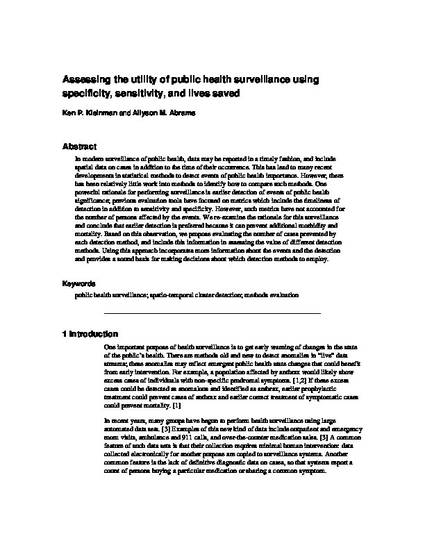
In modern surveillance of public health, data may be reported in a timely fashion, and include spatial data on cases in addition to the time of their occurrence. This has lead to many recent developments in statistical methods to detect events of public health importance. However, there has been relatively little work into methods to identify how to compare such methods. One powerful rationale for performing surveillance is earlier detection of events of public health significance; previous evaluation tools have focused on metrics which include the timeliness of detection in addition to sensitivity and specificity. However, such metrics have not accounted for the number of persons affected by the events. We re-examine the rationale for this surveillance and conclude that earlier detection is preferred because it can prevent additional morbidity and mortality. Based on this observation, we propose evaluating the number of cases prevented by each detection method, and include this information in assessing the value of different detection methods. Using this approach incorporates more information about the events and the detection and provides a sound basis for making decisions about which detection methods to employ.
Available at: http://works.bepress.com/kenneth-kleinman/14/
